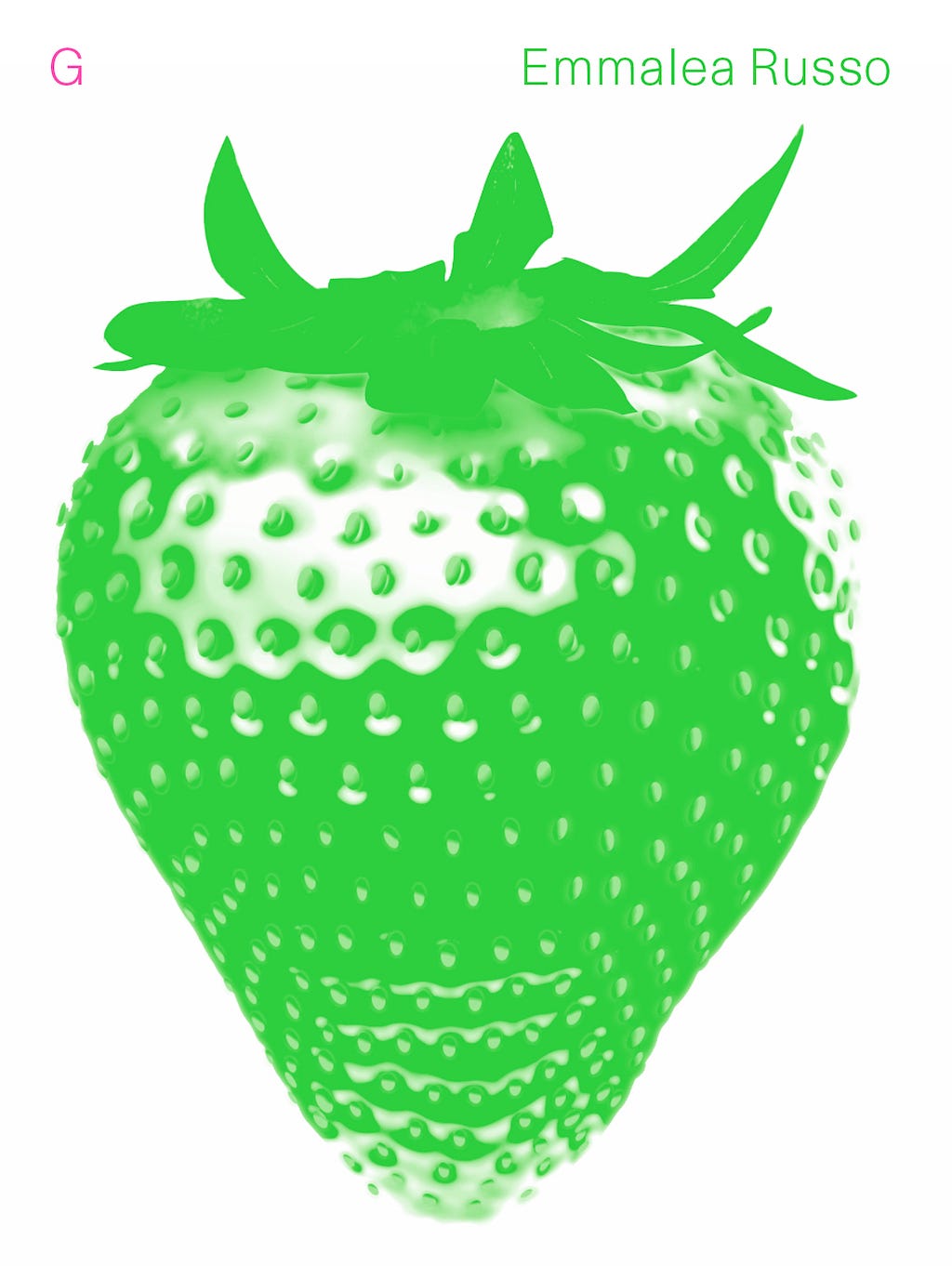Emmalea Russo’s debut book, G, is both tightly organized and extremely obscure. Russo’s artistic intentions are quite present, but their actual shape is impossible to discern. Reading G is a reflective experience, and each reader’s experience is going to be different, depending on the inside of her own head. The book forms an extended series of small mirrors, obscuring and exposing meaning. It’s Barthes’s “Death of the Author” in action.
The book is composed of two sections. The second section is thirteen pages of meditations, ideas, memories, and other fragments. One fragment reads:
When I go to the ocean, I walk along the edge. I move beyond the edge and enter saltwater. Broken and unbroken, the garden is far from the littoral zone. A body of water. The garden has its own edges. The g in the center of the word edges.
A shorter fragment reads “Don’t say pseudoscience.” This section is richly idea-driven, referencing Thomas Nagel, astrology, the I Ching, and qualia (which is essentially the phenomenon that drives the entire text of G). It’s continuous, if not really narrative; it refers to itself and builds as a text from beginning to end.
Not exactly so for the first section. In its 128 pages, it cleaves two-page spreads between a carefully shaped, numbered block of text in one font on the left side, and a more comprehensible (but less visually organized) text on the right, each styled in a different font. The page spreads are numbered from 1 to 64. Here’s 39:
[left]
Tendertalk. low vol
A pack of rabbits a
Singular vis Fig 1
Slow Motion Chew
Fig 2 Vernacular
Fig 3 See Greenery
[right]
Thin word-choice figures house stands while someone chews. The scene is closely packed and seems more horizontal so M I N D stretches.
Words or notions from the left side often appear on the right side (like “chewing” or “figures”). But little clarity results from these pairings. The book spirals ever deeper into its own language, its own arrangements, rather than translating its observations into a more straightforward English. G reads like a guidebook to a single subjective experience of the world composed by an entity that refuses to restate its thoughts in common syntax.

It follows that any meaning the reader makes is her own. There are objective qualities to the book: it writes of gardening in both detail and abstraction; it keeps returning to the letters of the English alphabet and the phenomenon of time; it circles around the relationship between geographical landscapes and the industry of human hands. But aside from more apparent themes (“The house no doubt overtaken by weeds”), the meaning of lines like “Forget we are gridded and passing” feel more open to interpretation than in an average book of poetry.
The same goes for the book’s single-letter title. The Publishers Weekly review of G took a position of certainty about what the G of the title refers to. I cannot. The more deeply I read G, the more sure I am that “G” has a meaning that is not singular or collective, not fixed or deliberate. Perhaps it’s something Russo is using the book to solve for, as one solves for X, but perhaps not. G could be garden, it could be God, it could be a human being named Gary or Geoff, it could be a nameless entity living inside Russo’s mind. It could be none of those things, or all of them.
To me it is qualia, or the mystery of subjective experience — a definition too grand and nebulous even to be sensible, when all I’m doing is reading a book. Doubtless my thoughts while reading were unique, based on my own knowledge and life experience. G (and G) are abstract enough to feel different to every reader. Which means the entire exercise of this review is absurd. How can a reviewer presume to know what’s in every reader’s mind?
Before I get so bound up in that question that I quit reviewing books entirely, I’ll note one other thing about G. As I read, I wondered if I was reading in the right order. The fragments are numbered consecutively, and in English we read from left to right. But I experimented with reading the right page first and the left page second, and it seemed almost to work better: the left page resonated more strongly after the right page than before it. Next, I tried reading the left-side pages backwards, from 64 to 1, and that proved interesting and worked well. But the right-sided pages definitely do go forward — again, not narratively, but continuously.
Through this play, I conceived an ideal method of reading G wherein the left-sided pages went back to front, while the right-sided pages went front to back, and still each page was being read in tandem with its opposite. It’s physically impossible to read G thus, but somehow I think that’s appropriate. The two sides interleave beautifully with each other, but they do so three-dimensionally, in unconventional ways.
However you read G, do read it. The prose is forceful and strange, and if read straight through, the book works on the mind in rare ways. Depending, of course, on the individual mind you use to read it.
The Mystery of Subjective Experience: Emmalea Russo’s G was originally published in Anomaly on Medium, where people are continuing the conversation by highlighting and responding to this story.
